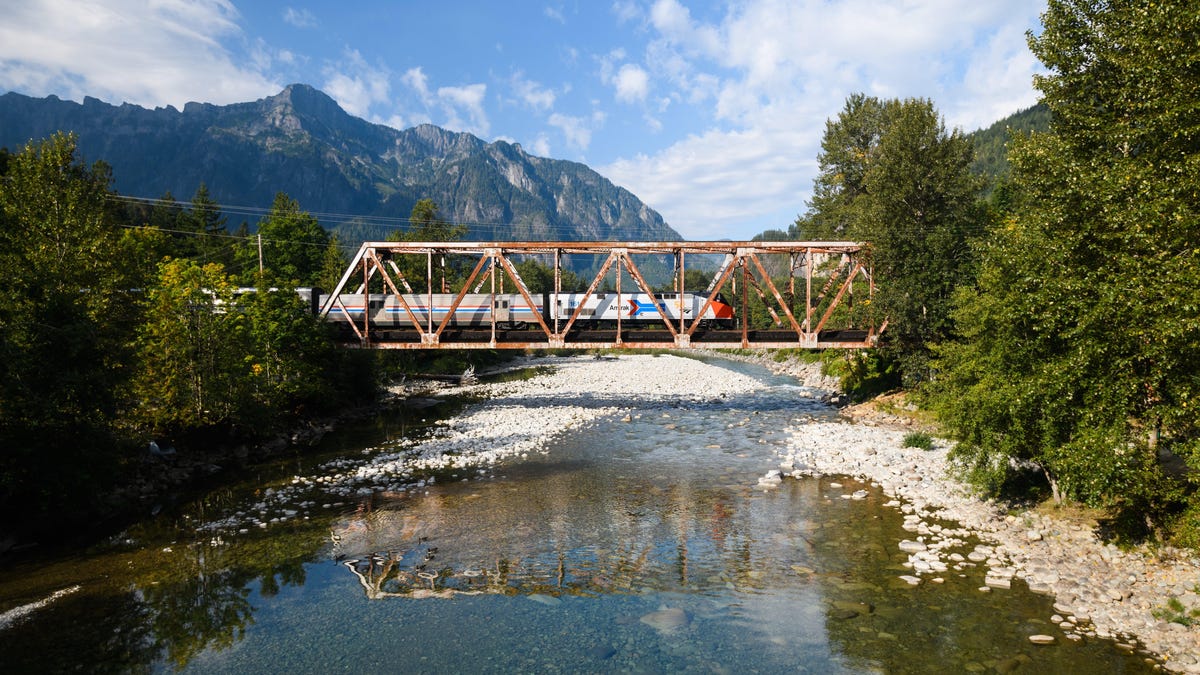The Eight Basic Baking Tools You Need (Even If You Don't Bake That Much)
Whether you have no interest in baking, or can’t wait to get your oven mitts dirty, you’re going to need some solid baking gear. There’s a huge range of fancy and fascinating tools, but most of it is only...

Whether you have no interest in baking, or can’t wait to get your oven mitts dirty, you’re going to need some solid baking gear. There’s a huge range of fancy and fascinating tools, but most of it is only necessary if you plan on making a specific good. (My madeleine pan is currently collecting dust, poor thing). Hardly any of it is needed when you’re outfitting your kitchen with the essentials. Here’s a list of tools that will serve multiple purposes, and will take care of everything you bake, from macaroni and cheese to pumpkin pie.
A proper mixing bowl
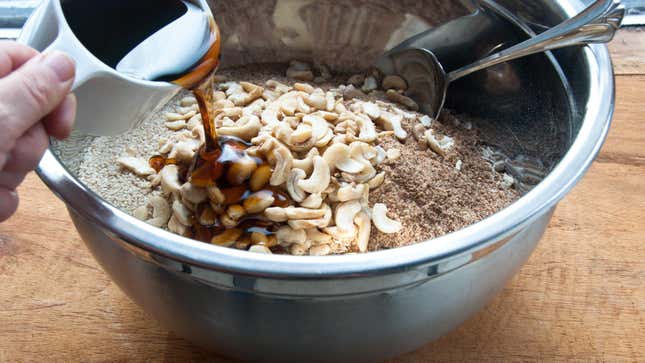
Photo: Erika J Mitchell (Shutterstock)
You got a set of six soup bowls from Ikea. So did I, but you’re going to need at least one more bowl–a mixing bowl. This bowl should be large enough to handle a double batch of cake batter, and deep enough to catch any whipped cream splatter coming off of your hand mixer. (Steep walls are important.) A bowl like this is a stalwart in the kitchen. Besides mixing up your famous peanut butter cookie dough, you’ll use the bowl to assemble salads, marinate proteins, and toss cut vegetables with oil. It also makes a great popcorn bowl.
I recommend a stainless steel mixing bowl. It’s lighter than glass or ceramic, doesn’t trap oils and odors like plastic, and conducts energy well if you need an impromptu double-boiler. My aesthetic veers towards brutalist, but I think it looks pretty enough to double as a serving bowl. If you’re only getting a single mixing bowl, get one that holds at least six quarts. If you have room for more, there are some nice nesting sets out there. I don’t mean to get too picky, but since we’re here, look for a bowl with a lip, or a small overhang around the top edge. This lip is crucial for precision pouring without spills or dribbles, and you’ll regret buying a bowl without this subtle feature.
I found some mixing bowls for you, lip and all:
Stainless Steel 7-quart BowlHeavy Duty Large Mixing Bowl Set of ThreeTovolo Stainless Steel Set of Four Mixing BowlsSheet trays
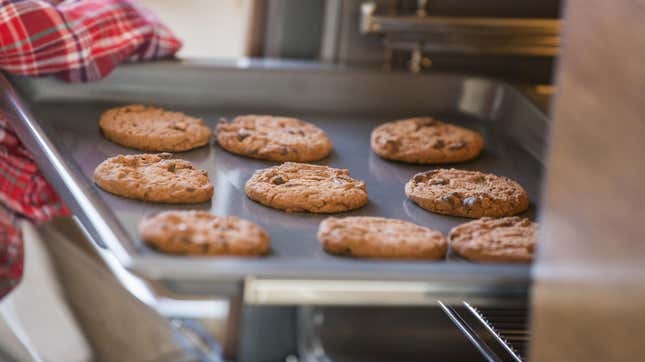
Photo: sirtravelalot (Shutterstock)
Sheet trays, or sheet pans, are different from cookie sheets, and cookie sheets are a scam. (Why have a flat sheet of metal with only one rimmed side when you can have four whole sides?) Sheet trays come in a range of sizes, but most home ovens aren’t large enough for a true full-sheet tray. If you’re only ready for a single sheet tray, go with the half-sheet size. A sheet tray is going to help you with baking cookies, biscuits, and choux puffs, but also roasting vegetables and baking bacon. The more you use them, the more they get seasoned and the darker the patina becomes. Years will go by and you’ll look back on all the good bakes you’ve shared together.
You can look for warp-resistant sheet trays, or the kind with the honeycomb design on the bottom, but even a lightweight, low-priced aluminum sheet pan can last a decade (and aluminum won’t warp). Just make sure to hand wash un-treated aluminum, and avoid sudden temperature changes to keep warping to a minimum.
Get a half-sheet tray, or two to bake multiple things at the same time:
Half-sheet trayAluminum Half-sheet Set of TwoA wire cooling rack
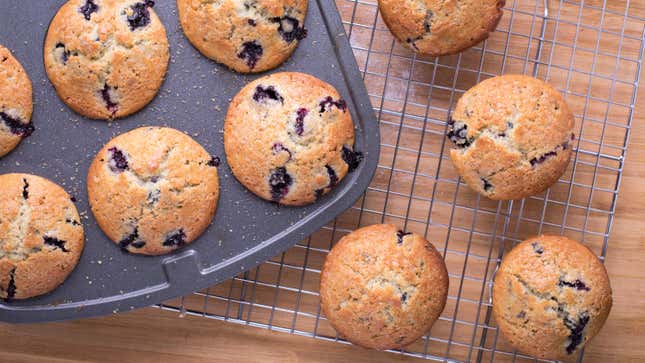
Photo: Allie Chanthorn Reinmann (Shutterstock)
A wire cooling rack is exactly what it sounds like and then some. It’s made of sturdy metal wires that intersect in a criss-cross pattern, with small feet at the bottom to keep the rack about half an inch above whatever surface it’s on. This allows air to run up, over, and under the items sitting on it, and that is a recipe for rapid, even cooling. Most importantly, no humidity builds up underneath.
Whether you need a safe place to set a hot pan, or you’re scooping cookies off a tray to cool, the wire cooling rack is here to help. It’s also clutch for keeping pancakes from getting soggy. They come in large or small sizes, and some are even stackable, so there’s no reason you can’t fit a cooling rack somewhere in your kitchen. Wire racks and sheet trays make a great team (for pouring ganache on a cake, rendering fat from roasted meats, or making an extra crispy batch of roasted vegetables), so look for a cooling rack that fits the size of your sheet tray.
I recommend the criss-cross pattern so cupcakes don’t teeter and cookies don’t droop:
Half-sheet baking and cooling rack2-pack stacking cooling racks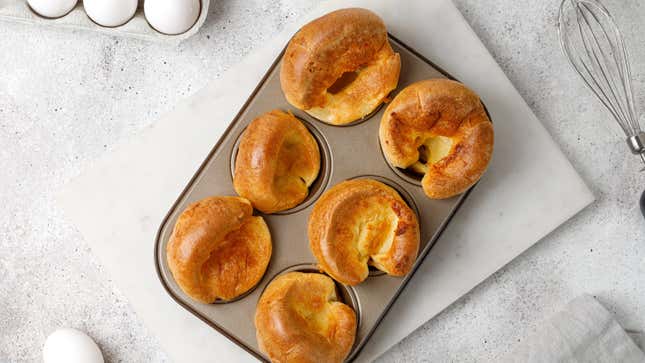
Photo: Maria Tebriaeva (Shutterstock)
A muffin pan
Before you skip ahead because you “don’t bake muffins,” take a pause. First of all, never say never to muffins, but regardless, understand that muffins are just one thing this clever pan is capable of turning out. Also referred to as a “cupcake pan,” you can use it to create a tidy mise en place when preparing a meal, and this divoted pan rocks breakfast time with baked or poached eggs, or eggs in ham cups. You can also use it to make impromptu Yorkshire puddings, or roast a whole bunch of onions to caramelized perfection.
When buying a muffin pan, consider the type of storage space you have. If you’re working with small cupboards, buy a few six-cup pans. If you have more space, buy the standard 12-cup pan. A 24-cup pan is for the cupcake maven with a lot of space, and if that’s you, bake proud. I like aluminum pans because they promote browning, they heat up quickly, and they’re lightweight, which is great because I stack mine vertically in the back of my cabinets. Ceramic muffin pans are pretty, but heavy, hard to store, and they increase the bake time significantly. I don’t think they’re worth the aesthetic.
Consider these muffin pan options:
Wilton Non-stick 6-cup Muffin Pan Set of 2Baker’s Secret 12-cup Muffin PanA casserole dish
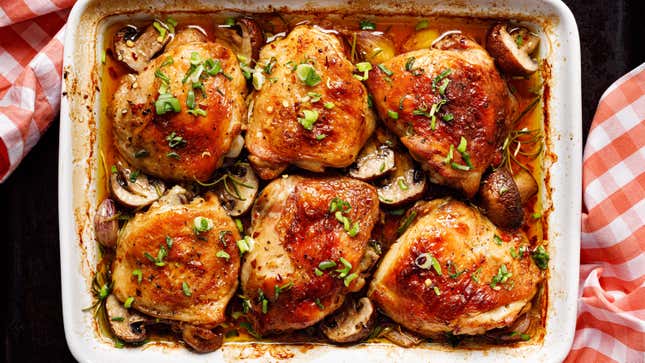
Photo: zi3000 (Shutterstock)
A simple, tall-sided, rectangular baking dish large enough for a lasagna or extra thick brownies is going to earn its spot in your grown-up kitchen. A standard 13 by nine-inch casserole dish is great for baking a snack cake, but the sheer number of actual casseroles out there will have you churning out a different dinner every night of the year. They’re great for braising meats, and are extremely helpful when serving the side dishes at big family meals. If you’re thinking of Thanksgiving, we’re on the same page. Whether you’re in charge of bringing the mac and cheese or you’re hosting and ran out of serving platters, the casserole dish is versatile and darn attractive. It transports well, can go straight from fridge to oven, then right onto the table (and back to the fridge, if there are leftovers).
Casserole dishes are supposed to be thick and sturdy for long cooking times. You almost can’t go wrong.
Parchment paper

Photo: Pixel-Shot (Shutterstock)
Most of the items we’ve covered so far are baking tools with widely versatile functions. While the next ones absolutely serve other purposes, they’re primarily really important baking tools. If you’re baking, you need parchment paper. This un-coated, nonstick paper will keep your worst baking nightmares from happening–namely cakes, cheesecakes, brownies, and breads sticking to the bottom corners of the pan. (It sucks.) While you can test your fate with butter and flour, there’s no clicking undo if you missed a spot.
Beyond the sweet stuff, meats and veggies like to stick to metal too. Sometimes oiling the pan just isn’t enough, and this nonstick paper makes for a safe environment. The most delicate of items, like fish, which can dry out easily in the oven, can be completely wrapped in a secure parchment parcel, called “fish en papillote.” This not only keeps the food from sticking, but traps the steam, cooking the fish gently.
To add a paper fail-safe, place a layer of parchment paper on the bottom of your pans for baking, and sheet trays for roasting. If you’re trying your hand at bread baking, you can proof and bake bread on the same sheet of parchment, transferring it directly to the oven. It also makes cleanup a heck of a lot easier for cookies, and all baked goods, for that matter. Although it’s disposable, you can usually bake multiple batches on the same sheet.
You can get pre-cut parchment paper, but the roll allows you to shape pieces as needed.
Reynolds Unbleached Parchment PaperBeyond Gourmet Non-stick Parchment PaperA couple round cake pans
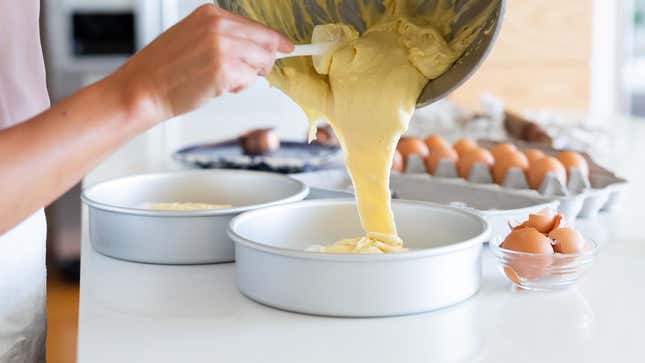
Photo: Karen Culp (Shutterstock)
Even the sometimes-baker is probably baking a cake at least once a year. Whether you’re using a store-bought boxed mix or making cakes from scratch, baking your cakes in two nine-inch rounds is a classic move for a reason. You can also make cheesecakes, upside down cakes, or a large quantity of hot spinach dip in a cake pan.
While I understand kitchen cabinet space can be tight (I’ve lived the NYC apartment life for a while now), I recommend buying two identical cake pans. Even if you think one layer is all you’ll ever need, you’ll run into moments when you need to bake off more batter. If you only have one pan, you need to wait for that layer to bake and cool before you fill it again. That could be up to 45 minutes of wait time, and by then the second layer might have spent its leavening power. Get more consistent results by baking the batter at the same time. Plus, it’s faster.
I like simple, round 9-inch cake pans:
Wilton 2-piece Cake Pans SetCrate & Barrel 9-inch Slate Blue Cake PanAny mixing machine
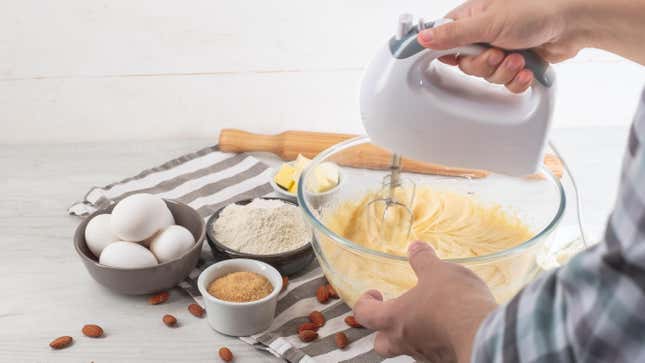
Photo: Anton Chernov (Shutterstock)
Even though I love my KitchenAid, I don’t think everyone needs a stand mixer. They take up a lot of real estate on the counter and they’re expensive. However, there’s no doubt that a high-powered machine makes baking accessible to more folks. I love baking bread, but I don’t think I’d ever make it if I had to knead it for 20 minutes straight with my bare hands. Similarly, whisking up a large batch of whipped cream would be exhausting using nothing but plain human arms.
I suggest getting a single mixing machine that works for you. It might be a stand mixer that sits on your counter, or a hand mixer that packs away to store in the cabinet. It might even be a food processor. With the variety of different attachments available these days, you could make pie crust, whipped cream, pizza dough, cheesecake batter, or cookie dough right in there. It’s not that you can’t do everything by hand, but a powerful machine is going to make baking easier, faster, more consistent, and frankly, more sustainable, fun, and easier to fit in to your schedule. There are a wide variety of handy machines that range in price, from under $20 to over $600, so consider what you’ll be mixing, your space, and your budget to settle on the mixer for you.
Find a machine that comes with the attachments you need and fits your budget:
Hamilton Beach Hand Mixer with 4 Attachments and Storage
Betty Crocker 7-speed Hand Mixer
Ninja Professional Plus with Dough Blade
Samsaimo Tilt-head Stand Mixer
Keep your particular kitchen size and cooking habits in mind, and have fun choosing the products you like; they’ll be with you for a while. Once you outfit your kitchen with these eight baking essentials, I guarantee you’ll be off to a strong start.

 Tfoso
Tfoso 







